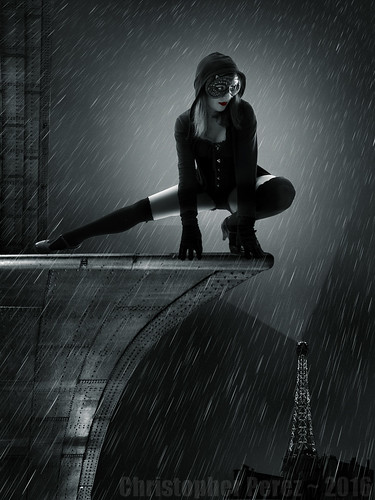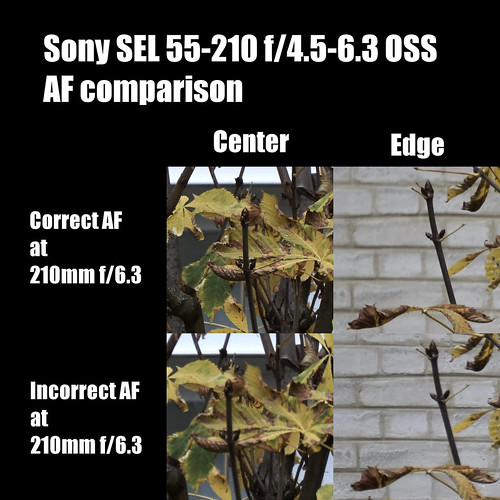Much is being made over the hard-right populist shift in First World global politics. First it was the BREXIT, then it was the Coming of the Donald, and now the planets are lining up for a hard right shift in France, too. I don't intend to talk about politics here. Rather, I would like to borrow and adapt a phrase that has some weight and meaning on the matter.
Here is the phrase I'm thinking of: Post-Truth
When using the phrase Post-Truth we understand what people believe and what influences people is no longer the truth. What people want is something different from formerly broadly accepted facts, figures, accuracy, and well-educated and (hopefully) deeply knowledgeable authority. If I understand the overall trend that has lead to Post-Truth, it is at it's most basic a cry for the individual to be seen and acknowledged. For me, these are the key words - "seen" and "acknowledged."
I wanted to find a phrase that applies to the field of images and photography, and is ideologically linked to Post-Truth. With this I would like to propose a somewhat parallel phrase.
Here is what I would like to propose: Post-Photography
I came to this after following a thread on Facebook where an image I created was discussed and criticised. The image was a shared effort between myself, a model (Mona Longueville), and my wife, Judith Turano.
I posted the finished work to my two (mostly in English) Facebook pages (personal and public) that I manage here in France. A few days later Mona shared the work to her page and that's when the fun began. The thread started out with a few positive comments, as such things commonly do. But then someone piped up and said (I'm paraphrasing here, as the original French was filled with nuances that don't translate well into English) they didn't like it and that they expected more from the creative team. A reply to the critique came quickly and another person suggested they didn't like the image either and that we could've done better.
Usually before a critique is offered in France there are questions about the intellectual and artistic framework of the art. There are usually questions about a work's place in art history and the continuation of an art movement. Typically people try to understand the context of a work of art so they can educate themselves as to the place and purpose of the thing they are viewing. They want to know the background so they can respond appropriately. It is one of the (very many) things I like about living here. Life and civility tend to extend well beyond the individual to spill into the larger commons and shared spaces (both physical and mental).
Being an American and knowing full well things I learned in the States normally don't apply here in France I simply couldn't let things rest. I replied that it was their turn to share their art so we could have a wee-look and pass along a critique in return. The smart-ass that I am I suggested I looked forward to telling them their work, too, could've been better.
All Holy Hell broke loose. People quickly discarded any attempt to understand the background of the image in question, ignored any discussion photography and photographic history, and set aside intellectual curiosity and accuracy in photographic arts criticism. People defended positions. Others said they didn't want to hurt the creative team by saying something negative. Still others suggested that my response was a little thin skinned and that they didn't mean to hurt me. In short, I needed to "get over it" and take any and all criticism like a man.
In the end, what the criticism came down to was that some people simply did not like heavily photoshopped work. They preferred "straight" photography. Furthermore, and this is very revealing and relevant to the proposed application of the phrase, they themselves feel they create and share "unmanipulated" images, and that, therefore, must be the preferred approach. It was a matter of simple, unabashed personal preference with a strong subtext of shifting rationalizations and responses. Could it be what the critics were desiring was to be "seen" and "acknowledged?"
Application of the phrase Post-Photography works on many levels. A person can shoot to share in the classic photographic tradition what they consider to be unmanipulated images. A person can choose to create heavily manipulated images. Or, as is now much more common than not, a person can simply ignore the technology and make images and videos of themselves and their surroundings using their mobile phone. In each of these areas current imaging practices has moved well beyond the traditional tools, approaches, and viewing responses.
Photography is no longer a means nor an end in itself. For the vast majority of people imaging has become (to put it rather crassly) a tool of narcissistic self promotion. In this Post-Photography world the tools of imaging are assumed. They are integrated into our daily lives to the point they have all but disappeared from our thinking. The primary impetus for making images or talking about them has narrowed to the point of the individual.
The individual is the shared link in my borrowing and rewriting the phrase Post-Truth into Post-Photography. Where the individual is the most important element of a belief system and cultural structure I have to wonder what are the roles of conversation, sharing, listening, looking, and civility?
Have we fully have entered the age of Post-Photography? I believe we have.

Here is the phrase I'm thinking of: Post-Truth
When using the phrase Post-Truth we understand what people believe and what influences people is no longer the truth. What people want is something different from formerly broadly accepted facts, figures, accuracy, and well-educated and (hopefully) deeply knowledgeable authority. If I understand the overall trend that has lead to Post-Truth, it is at it's most basic a cry for the individual to be seen and acknowledged. For me, these are the key words - "seen" and "acknowledged."
I wanted to find a phrase that applies to the field of images and photography, and is ideologically linked to Post-Truth. With this I would like to propose a somewhat parallel phrase.
Here is what I would like to propose: Post-Photography
I came to this after following a thread on Facebook where an image I created was discussed and criticised. The image was a shared effort between myself, a model (Mona Longueville), and my wife, Judith Turano.
I posted the finished work to my two (mostly in English) Facebook pages (personal and public) that I manage here in France. A few days later Mona shared the work to her page and that's when the fun began. The thread started out with a few positive comments, as such things commonly do. But then someone piped up and said (I'm paraphrasing here, as the original French was filled with nuances that don't translate well into English) they didn't like it and that they expected more from the creative team. A reply to the critique came quickly and another person suggested they didn't like the image either and that we could've done better.
Usually before a critique is offered in France there are questions about the intellectual and artistic framework of the art. There are usually questions about a work's place in art history and the continuation of an art movement. Typically people try to understand the context of a work of art so they can educate themselves as to the place and purpose of the thing they are viewing. They want to know the background so they can respond appropriately. It is one of the (very many) things I like about living here. Life and civility tend to extend well beyond the individual to spill into the larger commons and shared spaces (both physical and mental).
Being an American and knowing full well things I learned in the States normally don't apply here in France I simply couldn't let things rest. I replied that it was their turn to share their art so we could have a wee-look and pass along a critique in return. The smart-ass that I am I suggested I looked forward to telling them their work, too, could've been better.
All Holy Hell broke loose. People quickly discarded any attempt to understand the background of the image in question, ignored any discussion photography and photographic history, and set aside intellectual curiosity and accuracy in photographic arts criticism. People defended positions. Others said they didn't want to hurt the creative team by saying something negative. Still others suggested that my response was a little thin skinned and that they didn't mean to hurt me. In short, I needed to "get over it" and take any and all criticism like a man.
In the end, what the criticism came down to was that some people simply did not like heavily photoshopped work. They preferred "straight" photography. Furthermore, and this is very revealing and relevant to the proposed application of the phrase, they themselves feel they create and share "unmanipulated" images, and that, therefore, must be the preferred approach. It was a matter of simple, unabashed personal preference with a strong subtext of shifting rationalizations and responses. Could it be what the critics were desiring was to be "seen" and "acknowledged?"
Application of the phrase Post-Photography works on many levels. A person can shoot to share in the classic photographic tradition what they consider to be unmanipulated images. A person can choose to create heavily manipulated images. Or, as is now much more common than not, a person can simply ignore the technology and make images and videos of themselves and their surroundings using their mobile phone. In each of these areas current imaging practices has moved well beyond the traditional tools, approaches, and viewing responses.
Photography is no longer a means nor an end in itself. For the vast majority of people imaging has become (to put it rather crassly) a tool of narcissistic self promotion. In this Post-Photography world the tools of imaging are assumed. They are integrated into our daily lives to the point they have all but disappeared from our thinking. The primary impetus for making images or talking about them has narrowed to the point of the individual.
The individual is the shared link in my borrowing and rewriting the phrase Post-Truth into Post-Photography. Where the individual is the most important element of a belief system and cultural structure I have to wonder what are the roles of conversation, sharing, listening, looking, and civility?
Have we fully have entered the age of Post-Photography? I believe we have.

The Facebook critiqued image
that led to this blog entry

